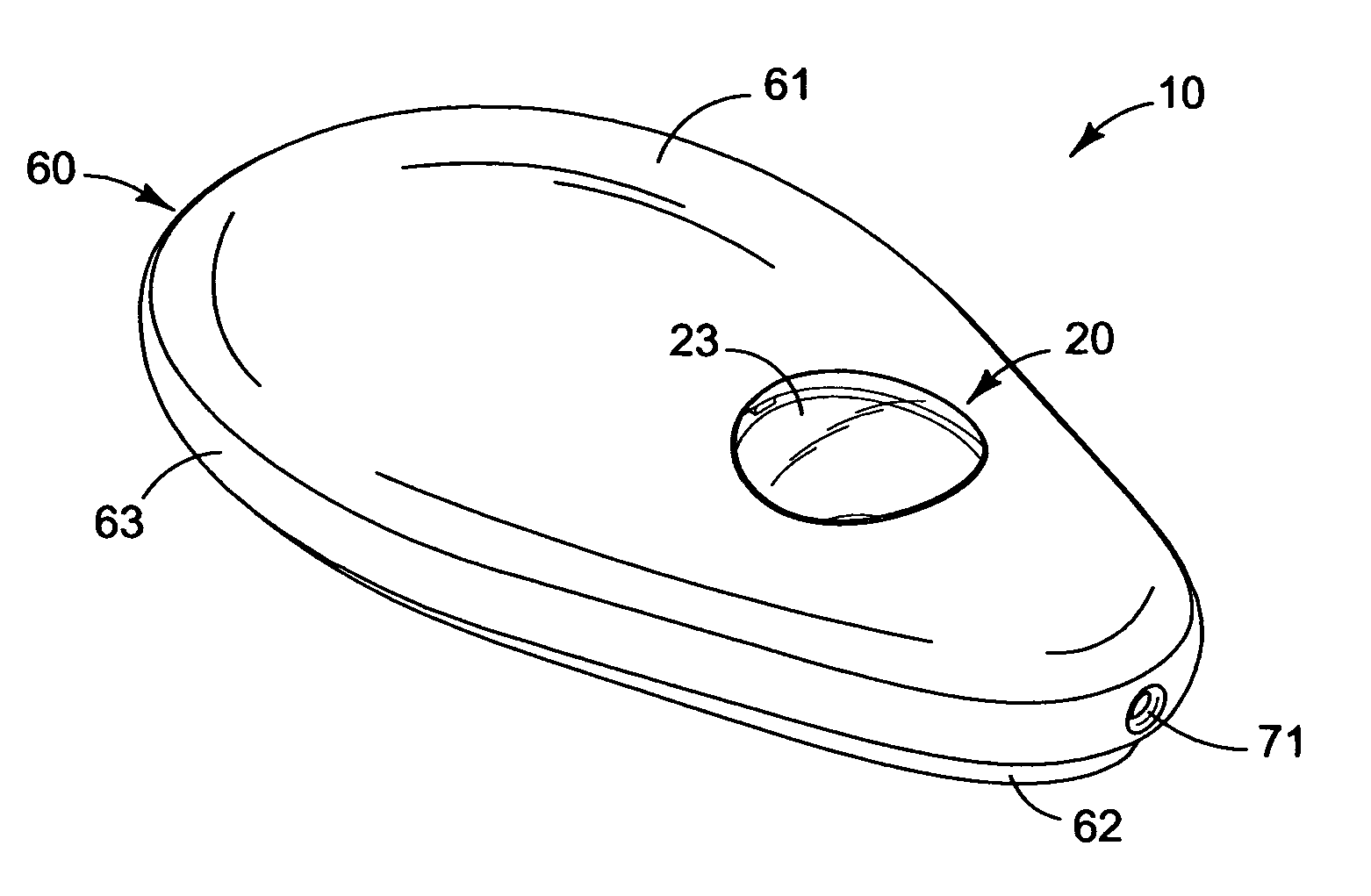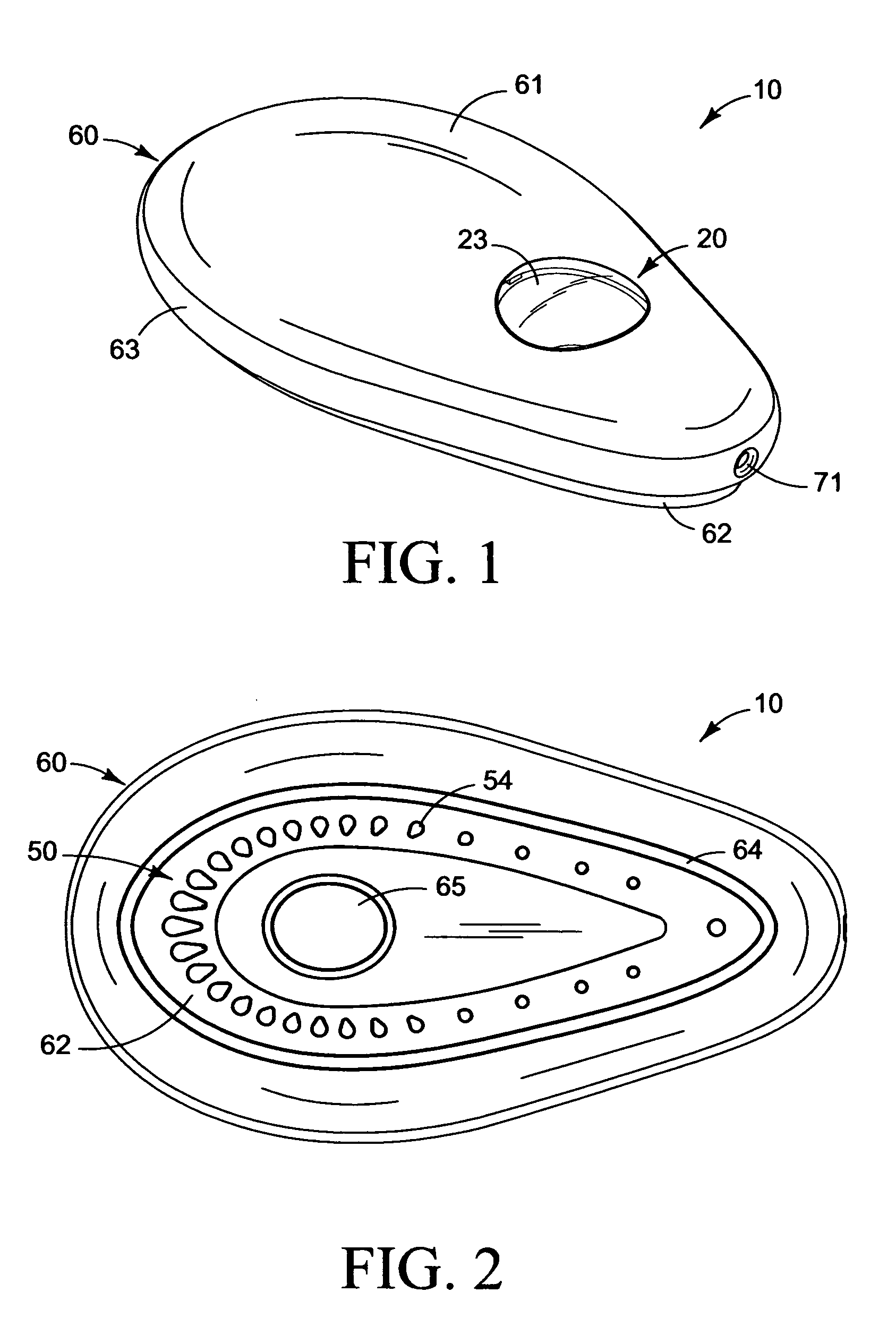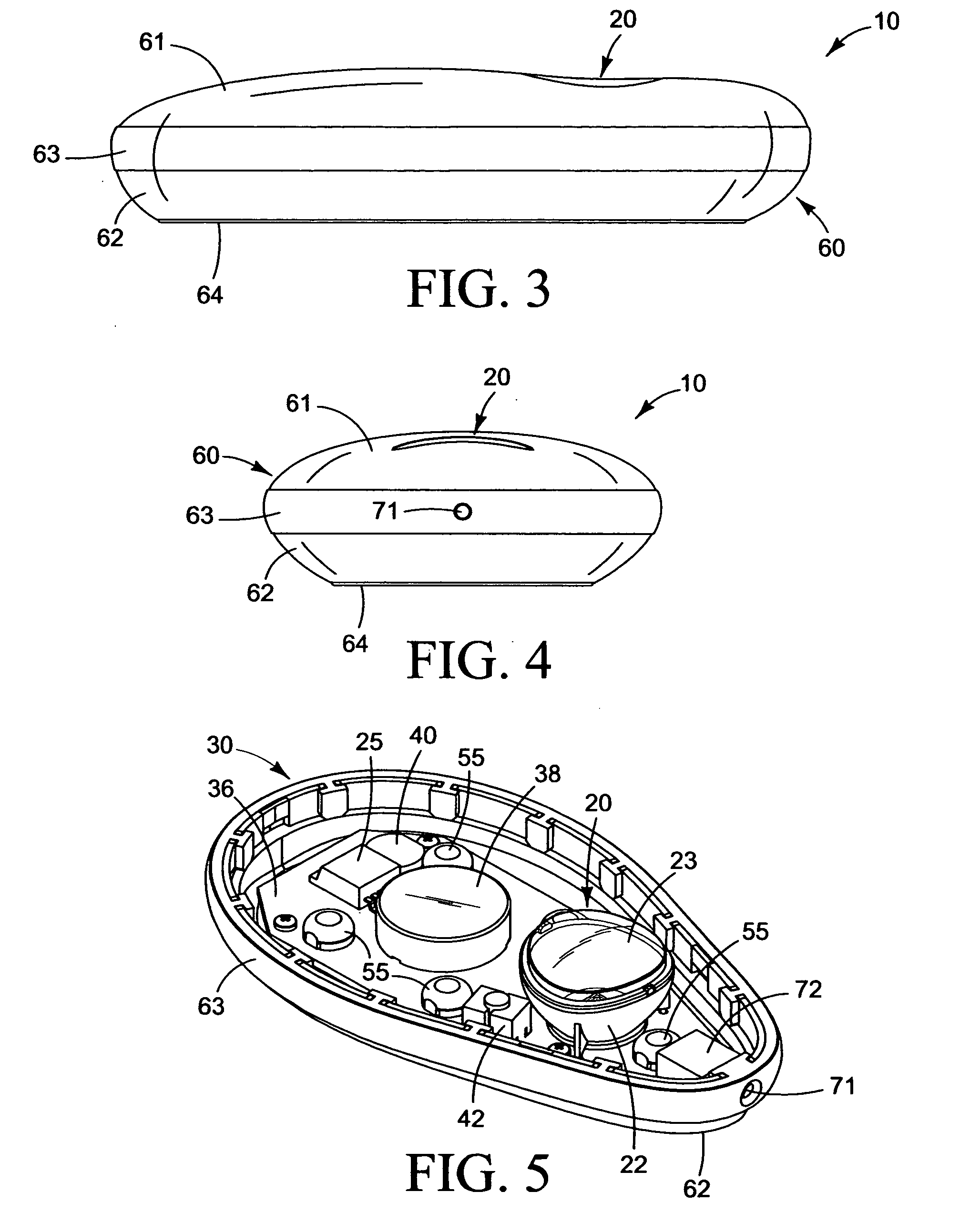Luminescent cycle regulator and fertility indicator
a technology of cycle regulator and fertility indicator, which is applied in the field of natural family planning devices and methods, can solve the problems of less reliable technique, many couples do not avail themselves of these measures, and few options left, so as to improve cycle regularity or prediction accuracy
- Summary
- Abstract
- Description
- Claims
- Application Information
AI Technical Summary
Benefits of technology
Problems solved by technology
Method used
Image
Examples
Embodiment Construction
Definitions
[0056]Entrainment—the gradual synchronization of a women's cycle to a schedule, other than the one that it would naturally follow, as a result of exposure to an external stimulus.
Dosage—intensity, duration and color of light delivered to the user during a single, light therapy session.
Treatment regimen—multiple dosages from the device over a period of therapy sessions.
Fertile days—the days during user's menstrual cycle when probability of conception during intercourse is increased; usually during the period of time starting 2-3 days before, to the day after ovulation
Subfertile days—all other days of the user's menstrual cycle that are not considered fertile days
DETAILED DESCRIPTION
[0057]The present disclosure is directed to a luminescent device and method for regulating the cycle of a woman in order to improve the regularity of the cycle thereby facilitating natural family planning. As shown in FIGS. 1-5, an embodiment of the device 10 can comprise a light source 20 for p...
PUM
 Login to View More
Login to View More Abstract
Description
Claims
Application Information
 Login to View More
Login to View More - R&D
- Intellectual Property
- Life Sciences
- Materials
- Tech Scout
- Unparalleled Data Quality
- Higher Quality Content
- 60% Fewer Hallucinations
Browse by: Latest US Patents, China's latest patents, Technical Efficacy Thesaurus, Application Domain, Technology Topic, Popular Technical Reports.
© 2025 PatSnap. All rights reserved.Legal|Privacy policy|Modern Slavery Act Transparency Statement|Sitemap|About US| Contact US: help@patsnap.com



